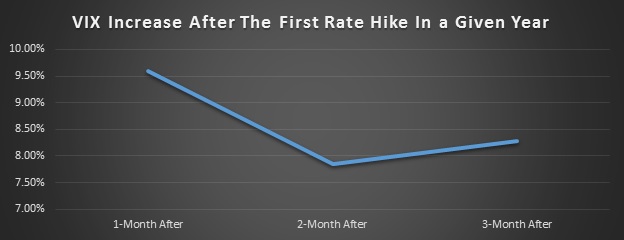The US stock market has gained over 3% this month thanks to the presidential election. The continuing all-time high records in the equity market have pressed the VIX Index down to a level close to that of last summer, when the market hovered around 52-week highs for over a month before a drastic pullback: The Dow dropped almost 400 points in just one day. The current low-volatility environment certainly feels like a déjà vu of summer 2016, but is the market being too complacent, or is it set up for further gains? As we are aware that the market was boosted by the election result and the high certainty of a Fed rate hike in December, we may be able to find the answer in these factors.
I. Political Uncertainty
Political risk is inherent across various markets and has its root in uncertainty. Once the election outcome took that uncertainty off the table, the market reacted ecstatically to the Trump victory surprise and attracted large fund inflows within a short period. However, since ample academic evidence has documented that the equity market behaves irrationally in the short run surrounding market events, we must ask, did the market overreact this time?
First, let’s take a look at the months during and following presidential elections in the past. Since 1950, 10 out of 16 election-year November returns were followed by a reversal in December. For the top three November returns in an election year, the average return in December was -3.23%. One of these three times occurred when Republican candidate Richard Nixon won the presidency in 1968. Interestingly, some argue that Donald Trump and Richard Nixon possess some striking similarities, such as winning the silent majority, running law and order campaigns, and – most importantly to the market – making promises on economic growth and focusing on solving problems like job creation and income inequality. Although the stock market rose sharply after Nixon won the election, the S&P 500 suffered a -4.16% return in December, wiping out all gains of the prior month. Therefore, until the president-elect finishes picking his administration staff and announces his new policies, we cannot say political risk has been resolved.
II. Federal Reserve
While the economic data available before the September FOMC meeting did not give the Federal Reserve a green light to raise rates, a December rate hike appears inevitable after the election. Federal funds futures indicate the chance of a December rate hike is close to 100%. Although it would be a big shock to the markets if the Fed did not move in December, the more realistic uncertainty is the Fed’s outlook for 2017. How many moves and how often the moves will be made are the million-dollar questions keeping the market on its toes. The forecast of four rate hikes that emerged from the December 2015 FOMC meeting made the markets constantly readjust their pricing in 2016 and created violent movements before each FOMC meeting. Hence, moments like this, when markets have to predict monetary policy, create an enormous divergence among market agents, which translates into market realignment and volatility. Historically, the VIX on average experienced a 10% increase in the one-month period following the Fed’s raising rates for the first time in a given year and remained higher throughout a three-month window. Since the Fed has been the market driver in the wake of last decade’s financial crisis, we can expect similar volatility going into next year.

Figure 1. VIX increase after the first rate hike in a given year
III. Market New High
While we are marching to index new highs day after day, a critical question is whether we should buy near all-time highs. The market has had over 400 days of marking new all-time highs since 1990. On average, market volatility rises almost monotonically in the three months following a new high. As we can see from the chart below, there is close to a 16% rise in volatility by the end of the three-month window after a market high is reached.

Figure 2. VIX increase after all-time high
IV. Conclusion
Before the dust settles, many key factors may still drive up market volatility. Markets tend to be complacent during the calm before a storm.
by Leo Chen, Ph.D.
